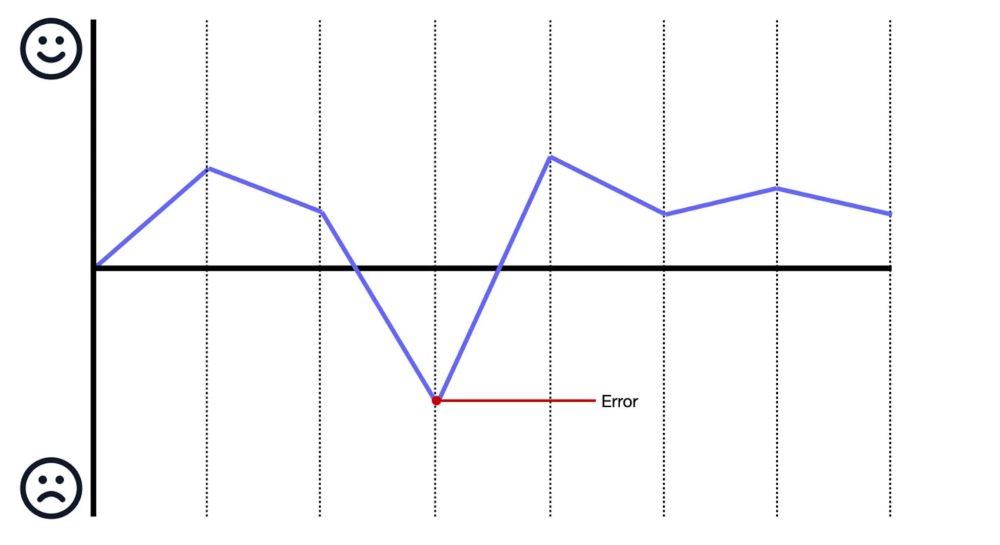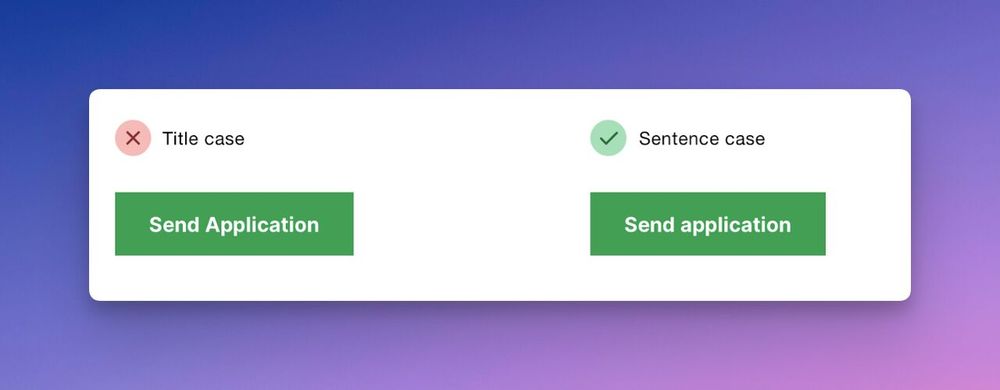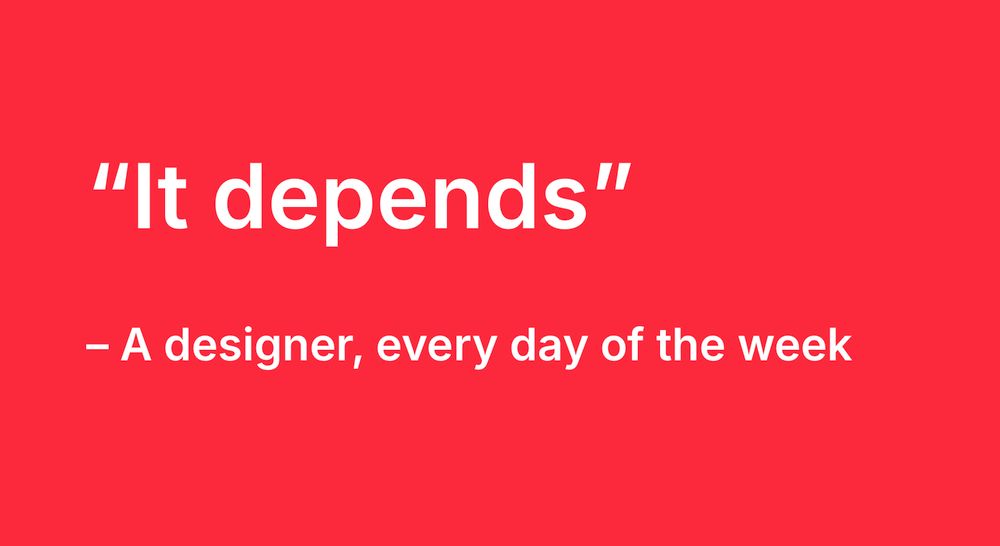oh I am more thinking with a still it's a written message (on slack)
With a video, it's just a video with a sentence intro.
06.08.2025 16:51 — 👍 0 🔁 0 💬 0 📌 0
if well written titles, then just the title as a link.
05.08.2025 14:48 — 👍 1 🔁 0 💬 0 📌 0
I hope/think this will be the case, but not without good design in the first place.
01.08.2025 14:20 — 👍 3 🔁 1 💬 1 📌 0

Form Design Mastery - With Adam Silver
Eliminate friction and increase conversion even for complex, supersized form flows
p.s. today’s the last day to pick up Form Design Mastery 2.0 with all the bonuses and before the price goes up. Will pop a link below.
Here you go:
formdesignmastery.com
31.07.2025 08:19 — 👍 2 🔁 1 💬 0 📌 0
1. When is the right moment to validate and show errors?
2. What is the best way to present errors on screen?
3. How do you write crystal-clear error messages?
If you mess any of this up users will get stuck or worse leave.
Good UX helps users recover from errors.
31.07.2025 08:19 — 👍 2 🔁 0 💬 1 📌 0
But even if your form has the clearest questions with the most simple interactions, users will still, at least sometimes, make mistakes.
And when that happens, it’s a low point in the their journey.
If you want to give users the best validation UX you must answer 3 key questions:
31.07.2025 08:19 — 👍 0 🔁 0 💬 1 📌 0

Journey map showing that an error is a low point in the user’s journey
Yesterday, I shared my third law of form design:
Users will make mistakes no matter how well your form is designed.
It’s not that you shouldn’t do everything in your power to reduce errors...
31.07.2025 08:19 — 👍 3 🔁 0 💬 1 📌 0
Cleanshot X for stills with arrows. And for videos.
31.07.2025 06:55 — 👍 1 🔁 0 💬 1 📌 0

Form Design Mastery - With Adam Silver
Eliminate friction and increase conversion even for complex, supersized form flows
If you’d like help with the latter, you might like my course, Form Design Mastery:
formdesignmastery.com
If you pick it up in the next two days, you’ll also get 9 bonuses, including a live session where you can ask me questions and get feedback on your designs.
30.07.2025 11:15 — 👍 1 🔁 1 💬 0 📌 0
“I like it, it looks nice” is not great user feedback.
I mean it’s better than hearing “I hate it, it looks sh*t”.
But it’s still not great.
Users should really only notice something when it doesn’t work.
Otherwise it should just work and get out the bloody way.
30.07.2025 11:15 — 👍 0 🔁 0 💬 1 📌 0
5. Why not rely on the standard browser loading indicator.
6. You could use a spinner, but do they convey their meaning well?
Let me know what you think below.
24.07.2025 11:15 — 👍 0 🔁 0 💬 0 📌 0
3. If you add text outside the button, it might not be seen or might cause a layout shift
4. Fixing the button width is not ideal because the text could break out of the width
24.07.2025 11:15 — 👍 0 🔁 0 💬 1 📌 0
UI/UX designers: do you think you should update the button label to ‘Please wait’ when clicked?
Some thoughts:
1. Is it accessible to update a button’s label when clicked?
2. Updating the button’s label can cause a layout shift
24.07.2025 11:15 — 👍 0 🔁 0 💬 1 📌 0

Thanos in the garden
Me when a developer says:
“yep, we can do that, no problem”
23.07.2025 11:15 — 👍 1 🔁 0 💬 0 📌 0
Oh sorry, wasn’t sure :D
To me there are no advantages.
22.07.2025 13:57 — 👍 1 🔁 0 💬 1 📌 0
Sentence case is easier to read, and easier to spot nouns.
22.07.2025 13:28 — 👍 0 🔁 0 💬 1 📌 0
Tips like these are good for making quick sensible choices but if you have designers on your team who insist on talking to death about simple design decisions like these, then just leave it.
Don’t make design a blocker.
Move on and focus on bigger problems.
22.07.2025 11:15 — 👍 2 🔁 0 💬 0 📌 0

Title case on the left (bad), sentence case on the right (good)
Last week I posted this UI/UX tip:
Use sentence case over title case.
One of the 59 comments read:
“Oh. My. God. We went round and round about this at a previous job. My coworker put together a 25+ page PDF about the pros and cons of each.”
Here’s the thing:
22.07.2025 11:15 — 👍 1 🔁 0 💬 2 📌 0
6. The native date input is a nightmare to use
7. A footer should go at the bottom of the page
If you have other examples of things where it does not in the slightest bit depend, comment below (I am totally here for it).
21.07.2025 11:15 — 👍 2 🔁 0 💬 1 📌 0
2. Radio buttons should not use ticks
3. Text should be big enough to read it
4. Text inputs should look like text inputs
5. Title case makes it harder to spot nouns
21.07.2025 11:15 — 👍 2 🔁 0 💬 1 📌 0

“It depends” - A designer, every day of the week
“It depends” – UI/UX designers
I don’t disagree that some design decisions depend on the situation.
But I often here designers spewing “It depends” in reference to things where it does not in the slightest bit depend.
Here’s 7 examples:
1. Never disable the submit button
21.07.2025 11:15 — 👍 7 🔁 1 💬 1 📌 0
😎💪💪💪
20.07.2025 14:20 — 👍 1 🔁 0 💬 0 📌 0
Ahhh thanks Regina, how you getting on?
20.07.2025 09:27 — 👍 1 🔁 0 💬 1 📌 0
Quick heads up, to reflect the product quality, I’ll be increasing the price after the launch.
20.07.2025 07:34 — 👍 0 🔁 0 💬 0 📌 0

Form Design Mastery - With Adam Silver
How to design forms that users glide through using research-backed patterns
If you’d like to eliminate friction and increase conversion, even for complex supersized forms, now’s the best time to pick it up, as you’ll be invited to a live training over Zoom where you can ask me questions and get feedback live.
formdesignmastery.com
20.07.2025 07:34 — 👍 1 🔁 0 💬 2 📌 0
4. The Form Design Mastery Cheatsheet has 15 new rules (and I’ve renamed it to the Form Design Mastery Handbook)
5. New Form Design Mastery UI Kit
6. New Form Design Mastery AI Error Message Prompt
7. New Form Design Mastery Back Link Flow Diagram
20.07.2025 07:34 — 👍 0 🔁 0 💬 1 📌 0

Thanos in the garden
After 6 months of grind, Form Design Mastery 2.0 is finally available.
What’s new?
1. Most lessons have been refined and improved (and some removed)
2. New lesson on three laws of form design
3. New deep dive on how to write labels
20.07.2025 07:34 — 👍 1 🔁 0 💬 1 📌 1

Form Design Mastery - With Adam Silver
How to design forms that users glide through using research-backed patterns
If you want to see these principles in action, you might like my course Form Design Mastery.
I’m relaunching a brand new version tomorrow. And the first module is dedicated to “nailing the basics”.
Here’s a link to find out more:
formdesignmastery.com
19.07.2025 11:15 — 👍 3 🔁 1 💬 0 📌 0
→ Principle 3: Prioritise UX over aesthetics
Most designers spend all their time on aesthetics ironically at the cost of UX itself.
It doesn’t mean you make things look sh*t.
Aesthetics and usability are not in competition with each other.
19.07.2025 11:15 — 👍 1 🔁 0 💬 1 📌 0
→ Principle 2: Use plain language
An interface without words is just shapes.
It’s the words that matter most.
75% of my work focuses on the words.
19.07.2025 11:15 — 👍 1 🔁 0 💬 1 📌 0
Content Designer in local government.
Interested in digital accessibility.
Like music, books, food, running, cats and shenanigans.
he / him
Delivery @ http://createchange.io - Digital Transformation, UCD, Agile methods.
He/Him. I don't speak for my clients.
Organiser Agile Manchester, Agile Cambridge, Lean Agile Scotland, Ripples: Bristol, UX Scotland, SDinGov, Lean Agile Exchange
Service Design & Delivery at the Department for Education. CSS enthusiast, Intrinsic Design fan.
www.cathydutton.co.uk
I'm a service designer, creative technologist, coach, thinker, tinkerer, observer of people, maker of things.
→ https://simonwhatley.co.uk/
→ https://linkedin.com/in/simonwhatley/
Everyone’s fave kiwi goth Mom.
Lead Accessibility Specialist at Just Eat. Design systems and associated nerdery. Be kind ❤️
gerireid.com
Design Lead at UK Government Digital Service
Projects include Register to Vote, Petition Parliament, GovWifi and the GOV.UK Prototype Kit
https://joelanman.com
Level up your front-end skills. Stay for the approachable, friendly content and go away with transferable skills you can use day to day.
https://piccalil.li
Design Systems | Aircooled VWs | Made a few records you don’t have
https://www.das.house
Designer and product manager. Founder of simple.org, healthicons.org, hardproblems.com. Working on public health tech at Resolve to Save Lives: rtsl.org
Mediocre middle-aged white man from Ireland living in Brighton, England working with Clearleft.
I play traditional Irish music on mandolin and I play slide bouzouki in the band Salter Cane.
https://adactio.com
UX Researcher & Strategist, Inclusive Product Designer in Enterprise UX. Speaker, Author, Mentor & Teacher. Chaotic neutral tea & CSS lover. She/Her 🌈
https://stephaniewalter.design/ http://neurospicy.agency/
Forms and survey specialist.
Always keen to try to answer your questions about making better forms (and if you must, maybe even those about surveys).
Effortmark.co.uk
Freelance content designer currently working with Public Digital. Author of the novel, A is for Angelica. Sender of newsletters. 💌
Freelance work: verymeta.com
Fiction: iainbroome.com
Plain English newsletter: plainenglish.club
Systems Designer at GitHub, CSS nerd, co-host of the Complementary podcast.
katielangerman.com
Practical insights for better UX • Running “Measure UX” and “Smart Interface Design Patterns” • Founder of SmashingMag • Speaker • Loves writing, checklists and running workshops on UX. 🍣
Measure UX → https://measure-ux.com
Helping people fall in love with CSS
📺 https://YouTube.com/@kevinpowell
✉️ https://kevinpowell.co/newsletter
I post about UI/UX, usability, design and development.
UI/UX weekly tips 👉 https://l.vpon.me/newsletter-b
An online magazine for designers and web developers. Questions? The Smashing Team has your back! Curated by Iris, Vitaly, and the Support team.





